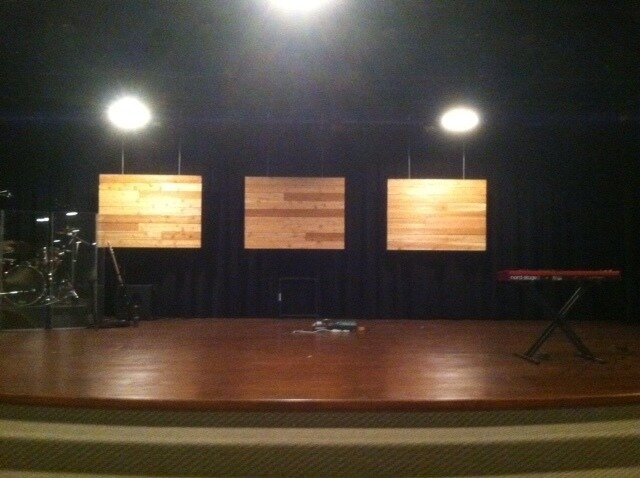blalew
Active Member
Hello all. A question regarding hanging some flat wood pieces for use as a background for video behind a speaker.
I have avoided hanging things because of all the warnings & so forth. So we're starting slowly after doing a lot of research.
The pieces we have constructed are similar to this:
Homemade Pallets | Church Stage Design Ideas
We have a batten to hang them from.
My question is regarding a system that we can use to hang things without using swingset chain, S-hooks, etc from Home Depot & instead using forged & rated components.
The flats have a frame. We were planning to attach two forged eyebolts to the bottom rail for each piece. Then, working upward - we would use a hook turnbuckle on each (for trim), then a thimble on wire rope (with cable clips), running up through small holes in the top rail of the frame, up to a small shackle that would connect the thimble of the wire rope hangers to a small (8" or so) wire rope sling running around the batten.
Trying to do it the right way.
Thanks all.
I have avoided hanging things because of all the warnings & so forth. So we're starting slowly after doing a lot of research.
The pieces we have constructed are similar to this:
Homemade Pallets | Church Stage Design Ideas
We have a batten to hang them from.
My question is regarding a system that we can use to hang things without using swingset chain, S-hooks, etc from Home Depot & instead using forged & rated components.
The flats have a frame. We were planning to attach two forged eyebolts to the bottom rail for each piece. Then, working upward - we would use a hook turnbuckle on each (for trim), then a thimble on wire rope (with cable clips), running up through small holes in the top rail of the frame, up to a small shackle that would connect the thimble of the wire rope hangers to a small (8" or so) wire rope sling running around the batten.
Trying to do it the right way.
Thanks all.




